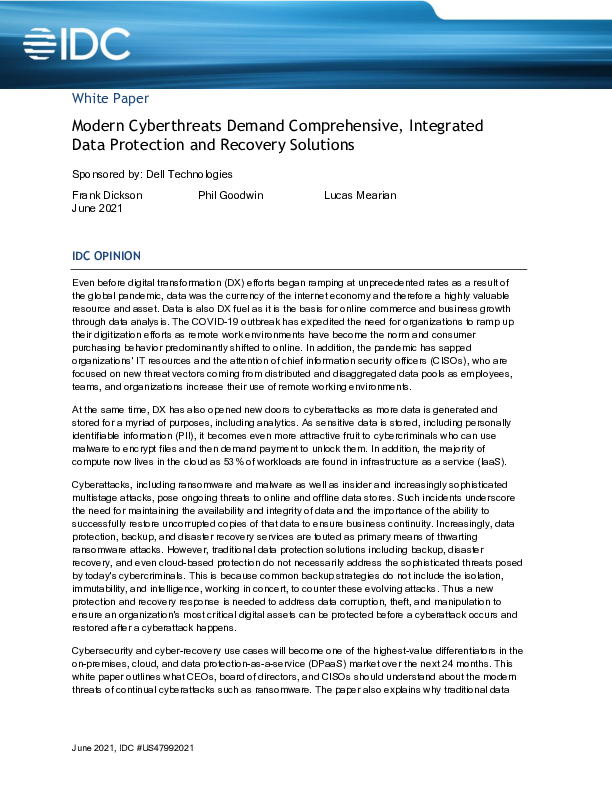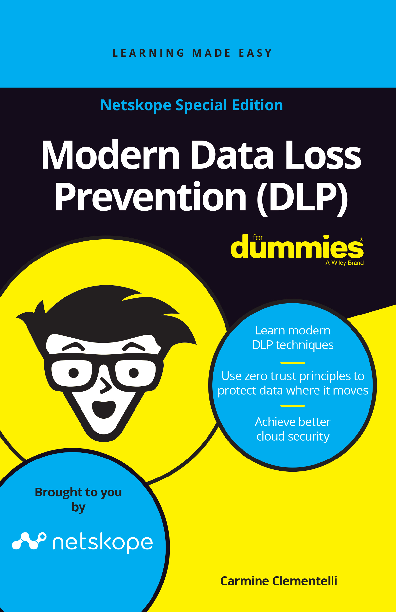

Modern Cyberthreats Demand Comprehensive, Integrated Data Protection and Recovery Solutions
Even before digital transformation (DX) efforts began ramping at unprecedented rates as a result of the global pandemic, data was the currency of the internet economy and therefore a highly valuable resource and asset. Data is also DX fuel as it is the basis for online commerce and business growth through data analysis. The COVID-19 outbreak has expedited the need for organizations to ramp up their digitization efforts as remote work environments have become the norm and consumer purchasing behavior predominantly shifted to online. In addition, the pandemic has sapped organizations' IT resources and the attention of chief information security officers (CISOs), who are focused on new threat vectors coming from distributed and disaggregated data pools as employees, teams, and organizations increase their use of remote working environments.
At the same time, DX has also opened new doors to cyberattacks as more data is generated and stored for a myriad of purposes, including analytics. As sensitive data is stored, including personally identifiable information (PII), it becomes even more attractive fruit to cybercriminals who can use malware to encrypt files and then demand payment to unlock them. In addition, the majority of compute now lives in the cloud as 53% of workloads are found in infrastructure as a service (IaaS).
Cybersecurity and cyber-recovery use cases will become one of the highest-value differentiators in the on-premises, cloud, and data protection-as-a-service (DPaaS) market over the next 24 months. This white paper outlines what CEOs, board of directors, and CISOs should understand about the modern threats of continual cyberattacks such as ransomware. The paper also explains why traditional data protection solutions do not fully address modern threats and how cybercriminals can defeat traditional backup and data protection technologies, even those that take data offline.









